What is a barn owl?
The barn owl is a very distinctive species of owl, with an iconic ‘facial disc’, white face and underside, and light brown and grey feathers on the back of its head and its back.
The barn owl is one of five resident species of owl in the British Isles, and one of four native species (the other three are: tawny, short-eared and long-eared, whereas the little owl is a non-native introduced species).
Read on to find out more about this beautiful owl in our expert guide by the RSPB:
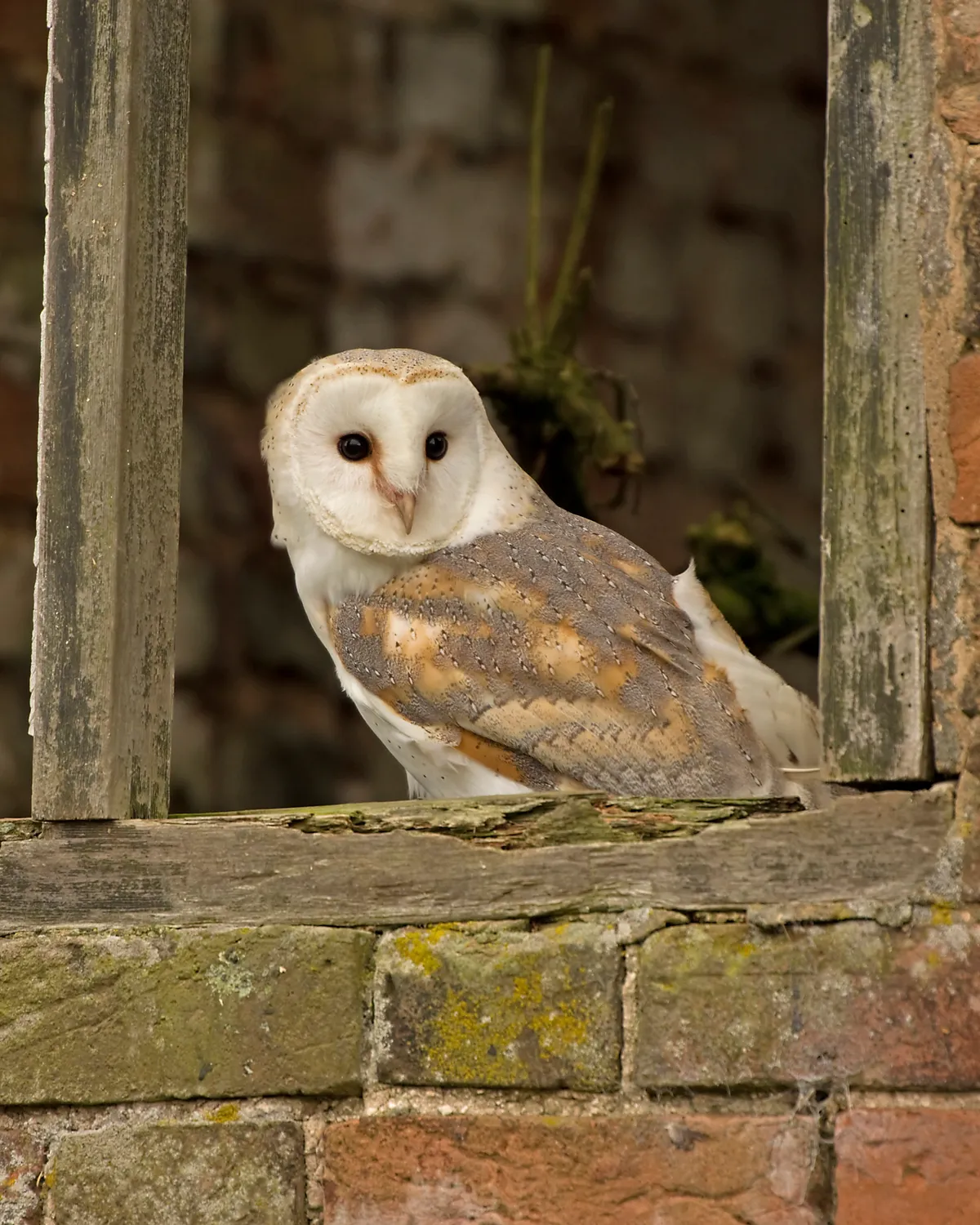
Why are they called barn owls?
Barn owls get their name from their habit of hunting on farms and nesting in barns
How to identify barn owls
Many will recognise the barn owl by its lovely heart-shaped face. Throw in a pure white underbelly and golden-hued back and wings, and you’ve got one iconic British bird! Its rounded wings mean its flight is quite leisurely.

Why are barn owls white?
White is a strange colour choice for a nocturnal predator. It’s almost as if barn owls want to be seen. Not all barn owls are as white as the UK subspecies, though; in much of Europe, they are a much darker rufous colour. Darker birds are generally harder to spot at night, but they can
be better seen in moonlight, when their hunts are correspondingly less successful. White birds, though, are unaffected by the phase of the moon.
It seems that a white shape looming suddenly out of the darkness is enough to startle a vole to the point that it freezes with fright (think rabbits caught in headlights), giving the owls more time to make the kill.
So why are some subspecies not white? Perhaps the advantages of startling prey are balanced against the risk of being spotted by mobbing species such as crows.
This Q&A originally appeared in BBC Wildlife Magazine, answered by Stuart Blackman.
How to identify a barn owl's pellet and feathers
A barn owl pellet consists of the fur and bones of its prey, which it is unable to digest and then regurgitated (coughed up). A pellet is normally regurgitated from roughly six hours after feeding, and one or two pellets can be produced each night.
A barn owl's pellet is quite large, measuring between 30-70mm in length and are smooth and rounded. When nice and fresh they are black, regardless of the colour of its prey, turning grey when older.
Barn owl pellets are the usually the easiest for dissecting as they can contain the remains of between four or five small mammals. They are usually produced at the same site, which is often dry as they roost and nest in the shelter of farm buildings.
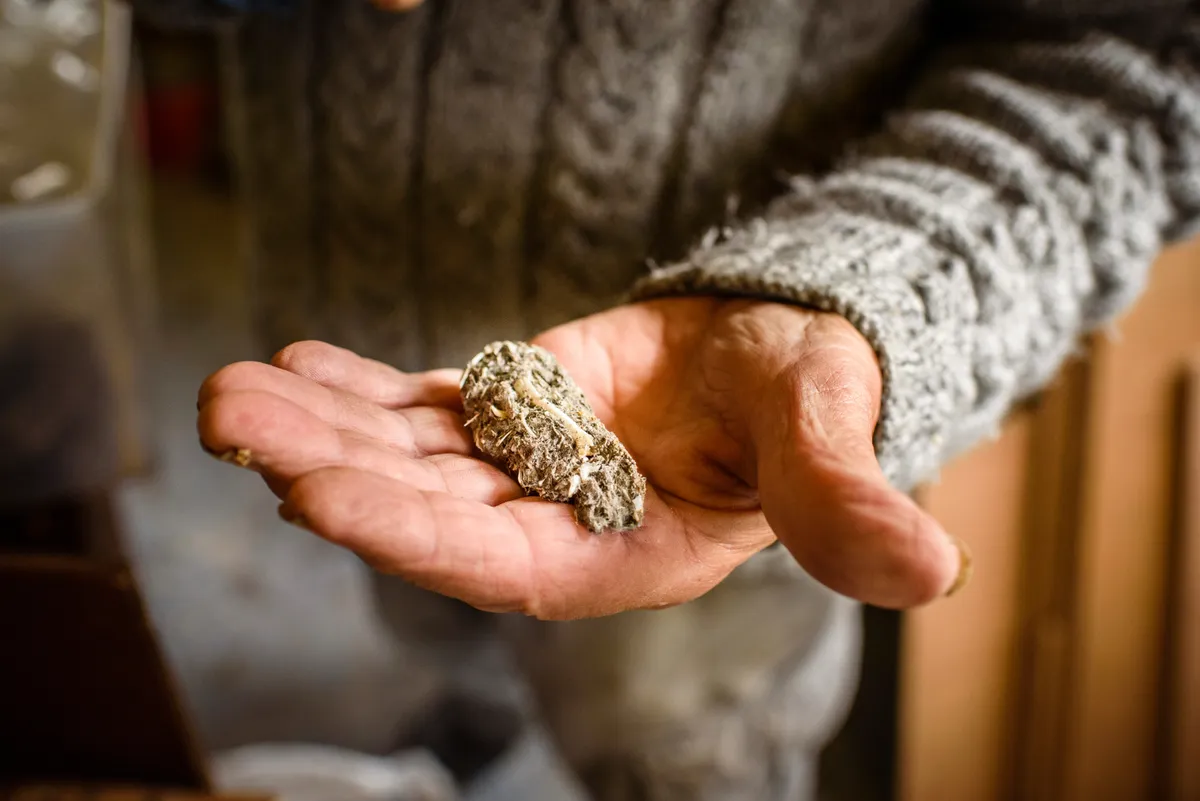
Both their small fluffy body feathers and their larger feathers from their underparts are typically white, with the body feathers having a tiny quill. Their upper body feathers have the classic golden hue with grey markings and a white lower section. The feathers can actually help to indicate whether they’re from a male or female barn owl – the males’ tend to be paler, with the females’ are darker.
How big are barn owls?
Barn owls measure roughly 25cm from head to feet, and have a wingspan of 85cm. Males tend to weight around 330g, and females around 360g. However female barn owls can weigh up to 425g early in the breeding season before egg laying.
What do barn owls sound like?
While many owls hoot, the barn owl screeches, purrs and hisses. Their eerie screech is usually heard in flight and is used to advertise territory and nest-sites.
They make lots of purring noises including when the female is food-begging and the male is showing off his nest. The hissing noise is mainly used as a distress call to warn off predators.
Where are barn owls found?
Barn owls live across the UK, favouring open country, field edges, riverbanks and roadside verges. Basically, anywhere they’re likely to find small, scurrying food!
Look out for them swooping over fields and roadside verges. If you're lucky, you may spot one perched on a fence post.
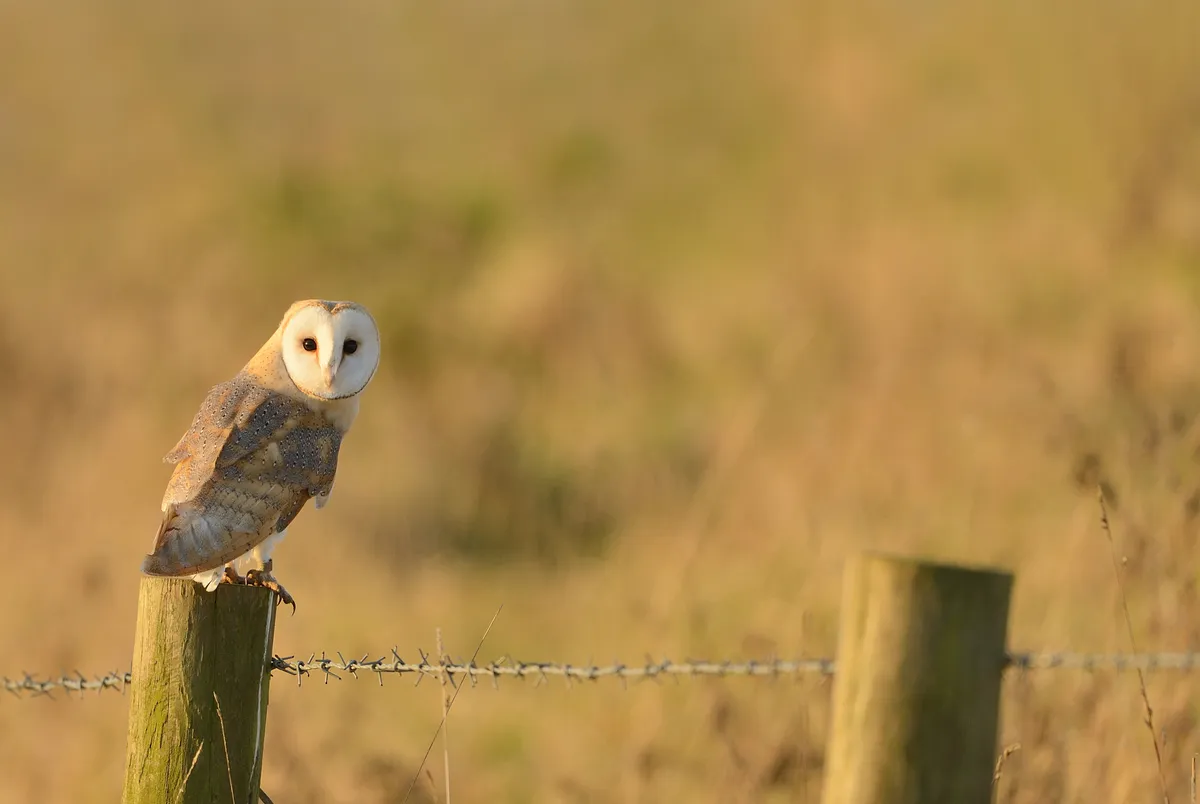
How many barn owls are there?
There are an estimated 4,000 pairs in the UK, with 110-220,000 pairs in Europe.
What do barn owls eat?
Barn owls typically eat voles, mice, rats and shrews, but they will also occasionally eat larger mammals and small birds.
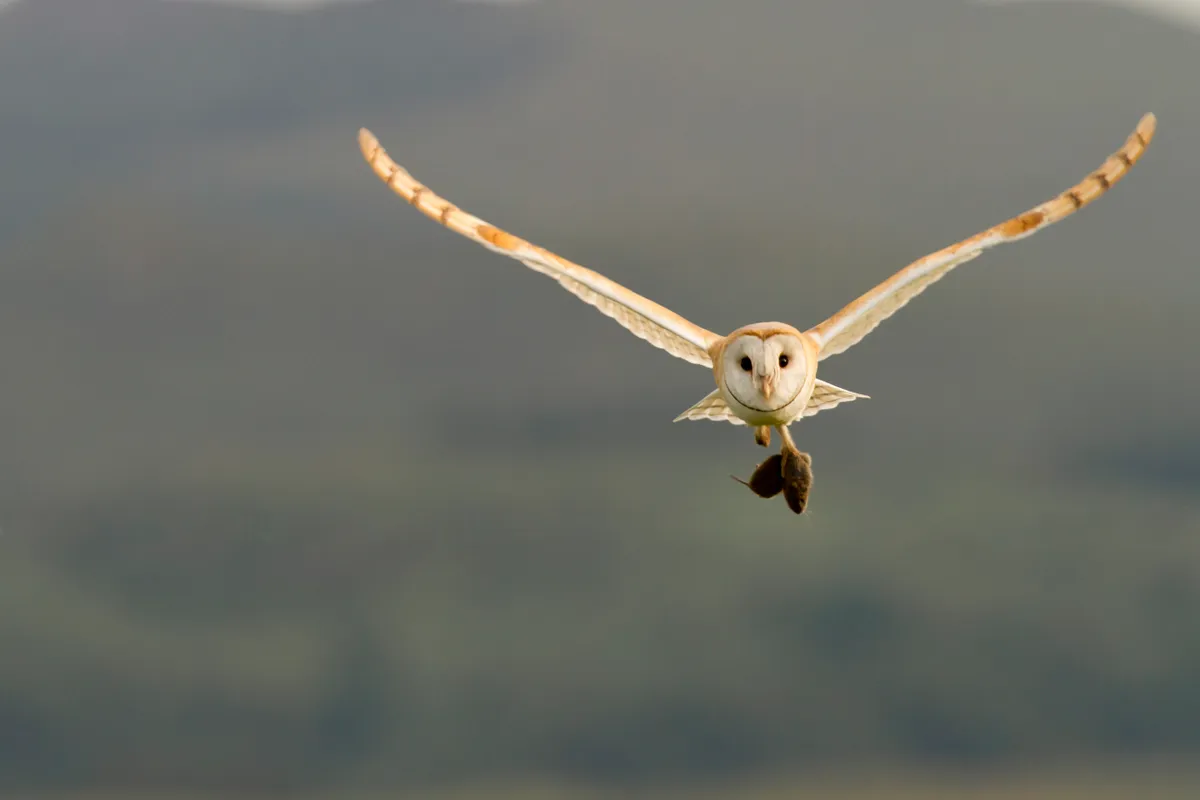
What eats barn owls?
Barn owls are pretty much at the top of the food chain in the UK, but buzzards, goshawks, and foxes, have been known to eat them on occasion. Cats also are unlikely to turn away from an owlet that’s fallen out of a tree.
Are barn owls nocturnal?
Barn owls are most active at dusk and dawn, but in winter or after prolonged rainfall, they may need to hunt during the day in order to survive.

How do barn owls hunt?
For locating its prey among rank vegetation, the main tool in a barn owl’s armoury is its exceptionally acute hearing. Here, the distinctively shaped face effectively operates as an elaborate hearing aid, funnelling any sound to the two ear openings. These are set asymmetrically on each side of the facial disc. The tiny time difference between the perception of sound in the left and right ear (30 millionths of a second) enables the owl to tell its prey’s direction of travel, and the asymmetry allows it to detect if the sound is up or down.
Their eyes are specially modified to operate in low light, with a high density of light-sensitive rods in the retina, plus an exceptionally large cornea and lens that help gather as much light as possible. The forward-facing position provides excellent binocular vision and helps gauge distance.
The most commonly observed hunting technique involves a slow and deliberate patrolling across suitable habitat, usually at a height of about 2–4m, while pausing to hover or hang in the wind whenever further investigation is required. Flight noise is vastly reduced by hair-like fringed edges on the wings, which enable the owl to detect the slightest noise emanating from its prey without giving its own position away. White underparts may also help blend its outline into the sky above.
Pouncing will not just occur directly from the air, but can occur from perches, with this latter technique considered more important in winter when the owl may also need to conserve energy. Irrespective of where it drops from, the descent is normally rather slow and controlled, with the wings held back and above the body, while the neck is extended. At this point, micro-adjustments can be made before the legs then swing in front of the head and the talons spread in preparation for a strike. If the first attempt fails, the owl may sometimes run across the ground in pursuit of the prey, but once captured, it is either swallowed whole on the spot or carried back to the young.
This article originally appeared in BBC Wildlife Magazine, answered by Mike Dilger.
How long do barn owls live for?
If a barn owl makes it to adulthood the typical lifespan is four years, though they have been recorded in Britain living up to 15!
How many eggs do barn owls lay?
The female will normally lay between four and seven eggs. They will then hatch in the order they are laid, so the oldest chick can be three weeks older than the youngest.
The female will stay with the chicks while the male provides all the food, until they’re about three weeks old and can keep themselves warm.
The female will then join the male in hunting for them until they are old enough to survive on their own, usually around 12 weeks.

Do barn owl chicks share food?
Birds share food as part of courtship, and when feeding young, but sharing between chicks is rare. Barn owls are an exception, and food plays an important role in the owlets’ hierarchy.
Female barn owls start brooding their clutch as soon as they lay their first egg, leading to asynchronous hatching – chicks may be up to three weeks apart in age. It pays to be eldest: the first-hatched quickly gain the upper hand against smaller, less-agile sisters and brothers in the race for the food parcels delivered by their parents.
But all is not lost for the babies of the brood, which heckle well-fed siblings before bartering preening services for a meal. Though this exchange helps overcome their precarious start in life, the co-operative system collapses in times of scarcity, when the youngest may find themselves on the menu.
This Q&A originally appeared in BBC Wildlife Magazine, answered by Laurie Jackson.
Read more about owls
- Tawny owl guide: how to identify, diet and where to see
- Long-eared owl guide: how to identify, what they eat, and when they hoot
- Little owl guide: how to identify, when they were introduced to the UK and where to see
- Short-eared owl guide: how to identify, where they live, and what they sound like
- British owl species: how to identify, diet and where to see
How many barn owl chicks are in an average clutch?
Clutch size can vary according to both habitat and whether it is a good vole year, but four to six is normal. Asynchronous hatching also occurs, with the oldest chick considerably larger than the youngest, but certainly by June all the young will be continuously demanding food from their hard-pressed parents, necessitating more flights in daylight hours. Finally, if you fancy looking for you own ghost, remember barn owls aren’t fond of flying in either the wind or rain – but who is?
Best places to see barn owls in the UK
Bourne
Bourne in south Lincolnshire hosts two owl towers built by the Len Pick Trust with the help of local college students. A live webcam will give you 24-hour access into the owls' lives.
Sunk Island
Sunk Island on the north bank of the Humber Estuary in East Yorkshire is a good place to catch up with owls hunting across the rough grassland of this flat landscape.
Burnham Norton and Burnham Overy Staithe
These two villages along the A149 in North Norfolk are both terrific locations from which to look for barn owls in the surrounding farmland.
Westhay Moor
Westhay Moor is managed by the Somerset Wildlife Trust and part of the wider Avalon Marshes complex. The lowland acid mire and surrounding farmland represent your best chance for a barn owl encounter.
WWT Martin Mere Reserve
This nature reserve in West Lancashire has five barn owl boxes spread across the wetland site, with up to three occupied in most years and second broods often recorded.
This article originally appeared in BBC Wildlife Magazine, written by Mike Dilger.
Fun facts about barn owls
Nicknames for barn owls
Sometimes called ghost owls, other nicknames throughout history have included screech owl and demon owl, which refer to their surprisingly noisy nature. A strange, piercing shriek or scream can often be heard during courtship, while calls for food by the young can vary from a loud snore to a hiss. Any intruders will get the hissing treatment too.
What does barn owl poo look like?
The digestive juices of barn owls are far less acidic than most day-flying raptors, so any fur and bone remains undigested in the foregut until muscular action compresses it into a tight mass and it is regurgitated in pellet form. Look for these below favourite perches.
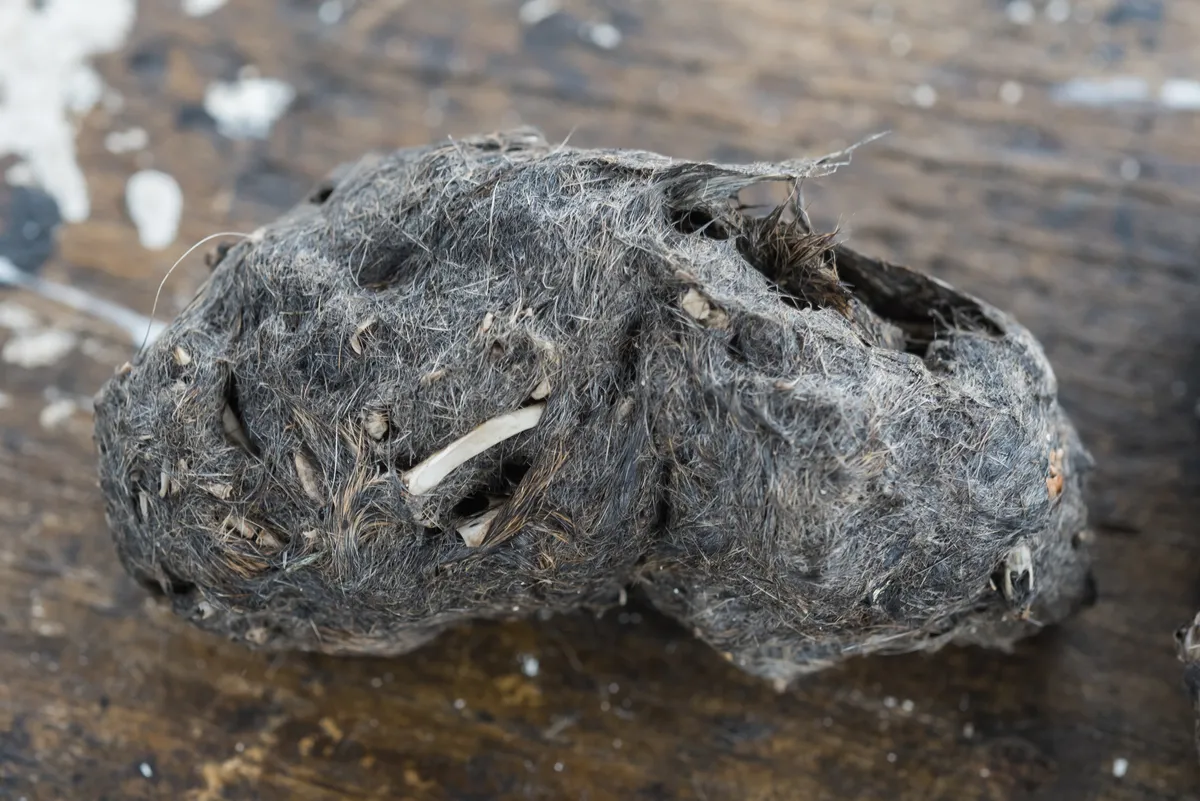
When do barn owls moult?
While taking care not to disturb either roosting or nesting spots, it is worth looking out for any moulted primary feathers from May onwards. A complete moult can take two or three years due to fluctuating food supplies and the continuing need for wing efficiency.
What is the scientific name of the barn owl
The scientific name of the barn owl is Tyto alba.
Are barn owls endangered?
It is hard to monitor nocturnal birds, but the data we have show barn owl numbers increasing in recent years. Their UK conservation status is now listed as ‘green’, above ‘amber’ and ‘red’.
However an update from Colin Shaw, an ecologist and the co-ordinator of the Barn Owl Conservation Network, in early 2021 reported that 2020 may have been one of the poorest breeding seasons on record for the species. He writes that this may be due to “the cyclical frequency in field vole abundance”, and the species should bounce back in 2021.
What work is being done to help barn owls?
Farm Wildlife, a partnership of organisations including the RSPB, is working together to give farmers advice on ‘best-practice’ management for wildlife on farmland, including habitat creation and management advice for barn owls.
The Barn Owl Trust also puts up nest boxes each year, and advises landowners on how to create foraging habitat and safely control rat populations to reduce secondary poisoning.
How can the public help barn owls?
As there is less and less woodland available, it can help to put up nest boxes that barn owls can call their own – you can find some on the RSPB website! Existing pairs of owls and their nesting (and roosting) sites should be given maximum protection from disturbance - if you have any farm buildings with birds nesting, consider screening off those areas and minimising work nearby.
You can also make sure not to fell trees or alter buildings with barn owls in them – if you’d like further information you can contact The Barn Owl Trust, the Barn Owl Conservation Network or the RSPB if you would like further information.

The RSPB is the UK’s largest nature conservation charity, inspiring everyone to give nature a home. Together with our partners, we protect threatened birds and wildlife so our towns, coast and countryside will teem with life once again. We play a leading role in BirdLife International, a worldwide partnership of nature conservation organisations.
Main image: A barn owl perched on fence post in Norfolk, England, UK. © Ben Andrew/RSPB Images





